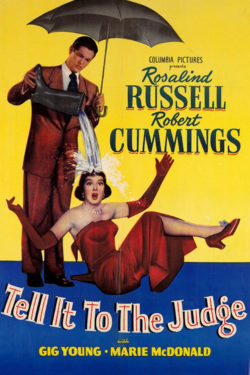Source of article The Jury Room - Keene Trial Consulting.
 Anyone who has been in court more than a few times, has likely heard a judge “rehabilitate” a potential juror who has expressed bias by asking the juror if they will, in judging “this case”, be “fair, impartial and unbiased”. Why yes, your Honor (say almost all of them). Mykol Hamilton and Kate Zephyrhawke, researchers, call this “prehabilitation” and have written several articles over in The Jury Expert speaking to this issue.
Anyone who has been in court more than a few times, has likely heard a judge “rehabilitate” a potential juror who has expressed bias by asking the juror if they will, in judging “this case”, be “fair, impartial and unbiased”. Why yes, your Honor (say almost all of them). Mykol Hamilton and Kate Zephyrhawke, researchers, call this “prehabilitation” and have written several articles over in The Jury Expert speaking to this issue.
But, today, we have a simple and straightforward blog post so you can tell it to the judge: it simply does not work! You may be familiar with Mind Hacks blog (one of our favorites) and Tom Stafford. Recently, Tom wrote a post that seems specifically designed to educate judges on the ineffectiveness of this common practice. According to Dr. Stafford’s post, it’s all about confirmation bias.
He describes a classic (i.e., thirty years old) psychological experiment by Charles Lord and his colleagues, that looked at confirmation bias. You can see the succinct explanation of this “classic” experiment over at Mind Hacks. Essentially, in this study, even though participants were asked to be objective and unbiased, they showed evidence of the same biases as they voiced prior to study completion.
In other words, the instructions to be fair and unbiased did not work even though the participants voiced their agreement with the importance of being fair and unbiased.
These researchers followed up this study with a 1984 study wherein they asked participants to “consider the opposite” (an effect we’ve written about here before).
To use the “consider the opposite” strategy, you would ask jurors to simply consider alternatives that could have happened and talk about how they might have occurred just as readily as the real outcome. In research, when participants do this, they are able to see the multiple outcomes that “could have happened” much more clearly and their tunnel vision (aka hindsight bias) surrounding the event dissipates.
In this study, half the participants were asked (again) to be “fair and impartial” and half were asked to “consider the opposite”. The results were powerful. Those in the “consider the opposite” condition “completely overcame the biased assimilation effect”.
That is, they did not make decisions based on preconceptions expressed prior to the experiment.
So. There you go. You can tell it to the judge (or not). If the judge insists on a “prehabilitation approach”—you can incorporate the idea of the “consider the opposite” strategy into your opening statement and then show jurors how to apply that strategy in your case in chief.
Who would have thought that research three decades old could solve a current-day problem?
Charles G. Lord, Lee Ross, & Mark R. Lepper (1979). Biased Assimilation and Attitude Polarization: The Effects of Prior Theories on Subsequently Considered Evidence. Journal of Personality and Social Psychology, 37 (11), 2098-2109
Lord CG, Lepper MR, & Preston E (1984). Considering the opposite: a corrective strategy for social judgment. Journal of Personality and Social Psychology, 47 (6), 1231-43 PMID: 6527215
